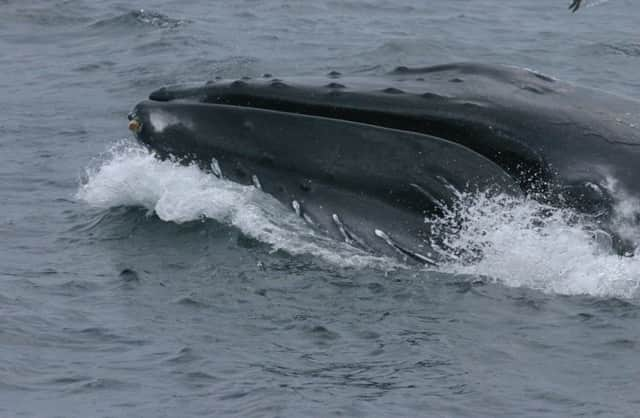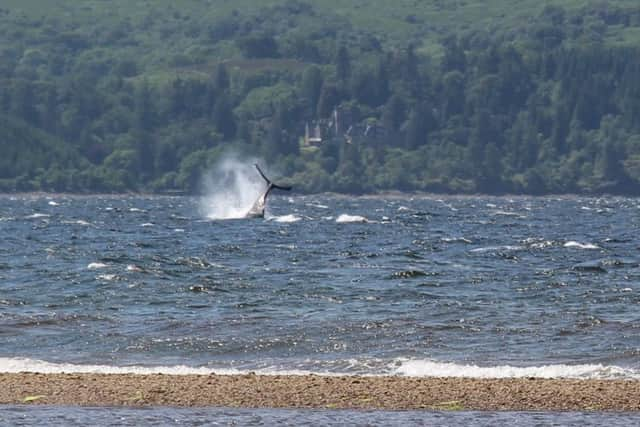Humpback whale spotted in Firth of Clyde


The rare ocean giant has been giving lucky onlookers impressive displays, leaping clear of the water and splashing its enormous fins and tail against the surface as it journeys towards up the Firth of Clyde.
The mammal has been photographed from the shoreline near Tighnabruaich in Argyll.
Advertisement
Hide AdAdvertisement
Hide AdHumpbacks are not a common sight in Scotland and even rarer in the Clyde.


The adult whale was first sighted in the Kyles of Bute on Monday and was seen again when it surfaced next to a yacht sailed by the Scottish Ocean Youth Trust on Wednesday.
Witnesses said it was spouting and swimming strongly when it was last seen, heading northward into Loch Fyne.
The unexpected visitor is not the first of its species to be glimpsed off Scotland’s west coast lately.
Over the past month at least four other humpback whales have been seen – one off the Isle of Lewis, two around Skye and one near South Uist.
Conservationists have hailed the latest appearance as a good sign for the recovery of the species, which was once hunted to the brink of extinction in Scottish waters.
Dr Conor Ryan, sightings and strandings officer for the Hebridean Whale and Dolphin Trust, said: “Usually we expect just one or two sightings of humpback whales per year, so to have five in a month is very encouraging and exciting.”
Experts are still not sure whether this indicates an increase in numbers, a shift into Scottish waters or improvements in reporting, but researchers in Ireland have also noted an increase in humpback whale sightings.
Advertisement
Hide AdAdvertisement
Hide AdHowever, Dr Ryan cautioned that the whale’s gigantic six-metre long fins, the largest forelimbs in the animal kingdom, puts it at high risk of becoming tangled in fishing nets and creel ropes while swimming through the shallow Clyde waters. Humpbacks cannot free themselves if they get snagged.
Charity workers and a team from British Divers Marine Life Rescue (BDMLR), the organisation responsible for rescuing stranded and entangled whales, will continue to monitor the whale’s movements.
Karl Hurd, BDMLR’s regional coordinator for south-west Scotland, said yesterday: “At the moment the whale is swimming freely with no signs of distress or entanglement.
“Hopefully it will make its own way back to deeper water and come to no harm.”
This week’s sighting is the third confirmed humpback whale in the Firth of Clyde in recent years.
On previous occasions, the whales apparently navigated their way out to the open sea. However, this is the first time the species has been seen so far north in the Clyde.
The trust is calling for people to report any whale sightings to help researchers discover more about their habits. The best way to do this is by photographing the underside of the tail fluke, which like a fingerprint carries its own unique pattern.
But Dr Ryan warned: “Although humpbacks can put on a spectacular show and are humbling to watch, we appeal to people not to stress the whale by approaching in boats.
“This individual is not in its typical environment and may be lost in the sea loch.”